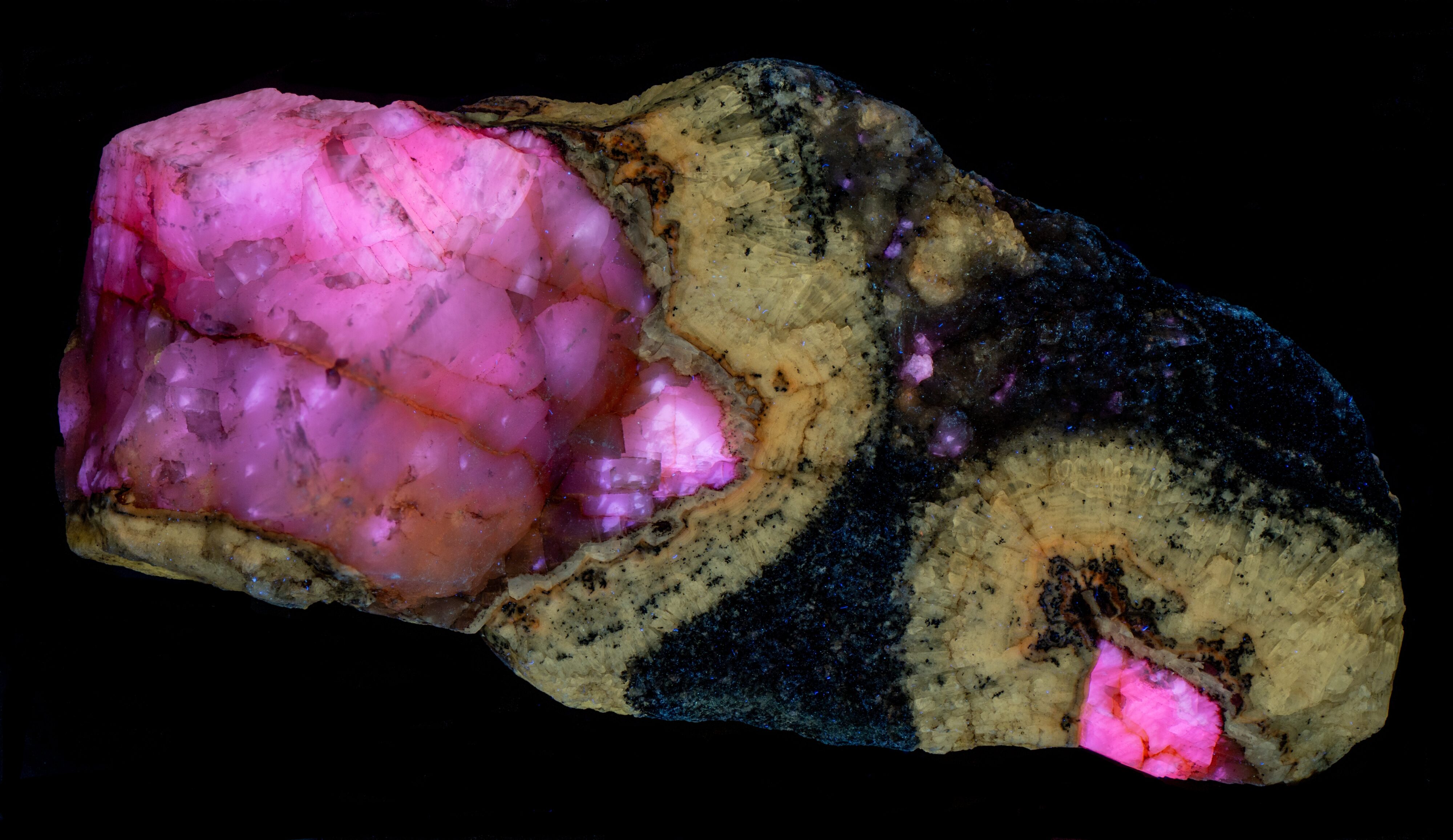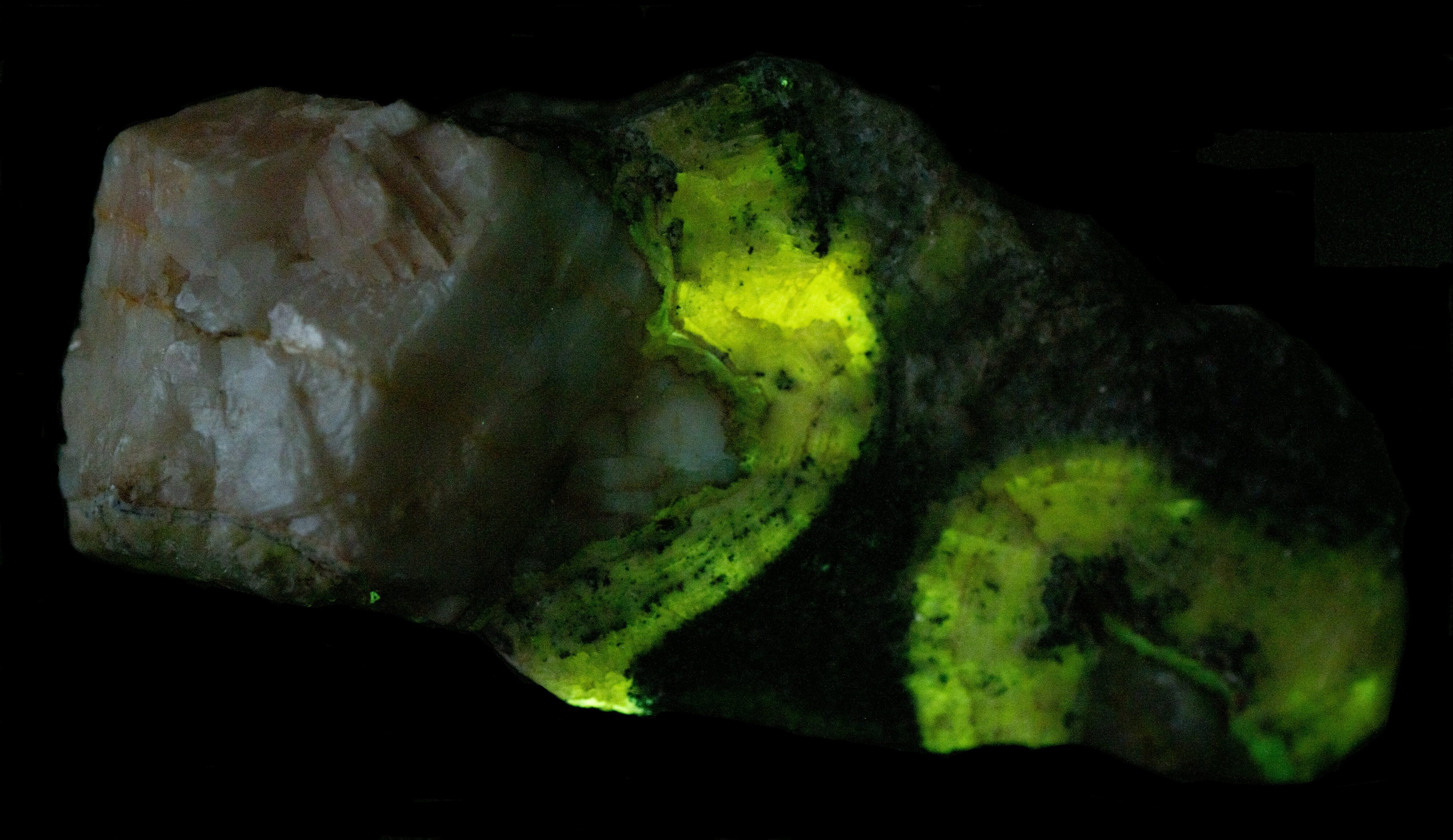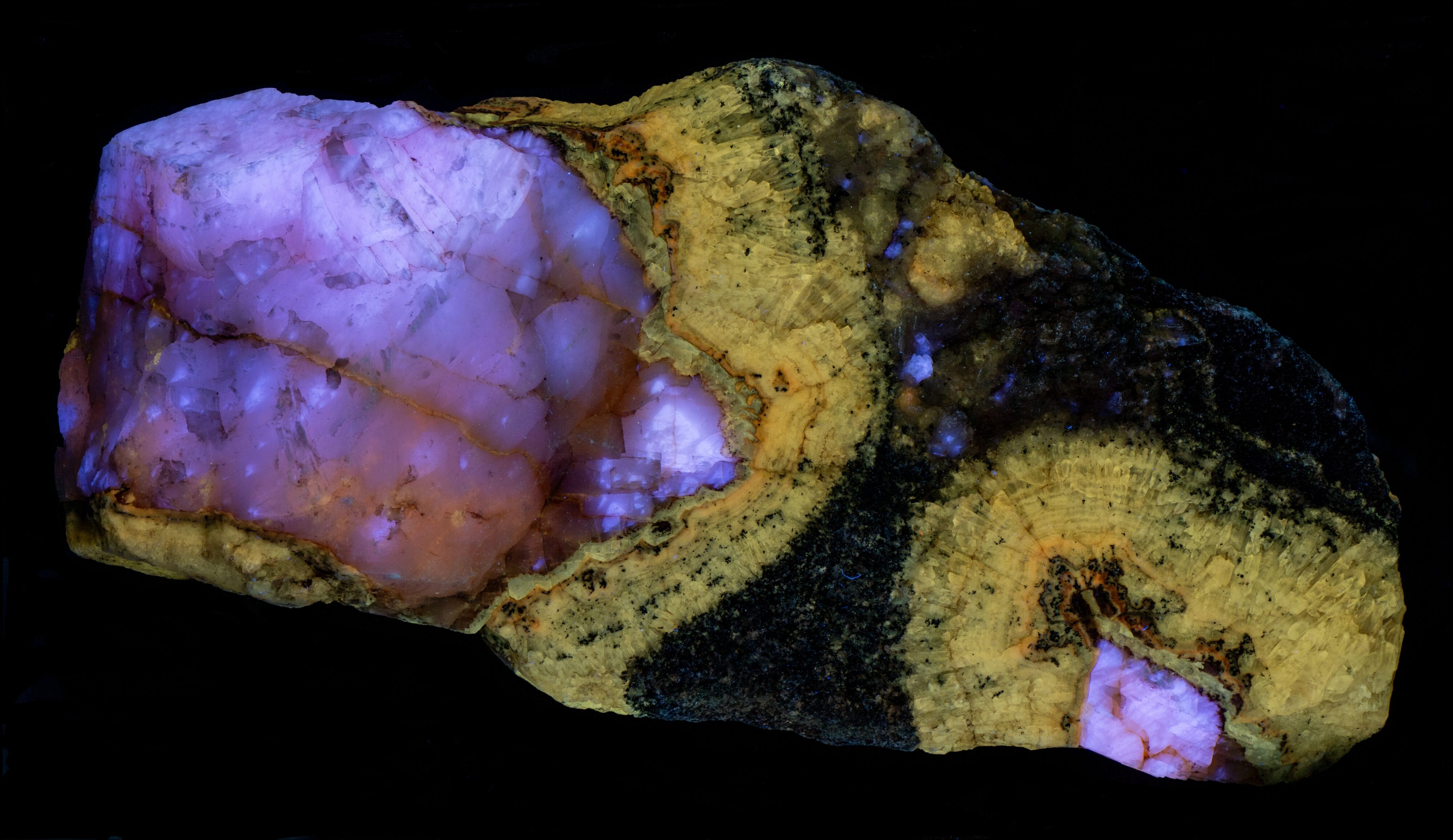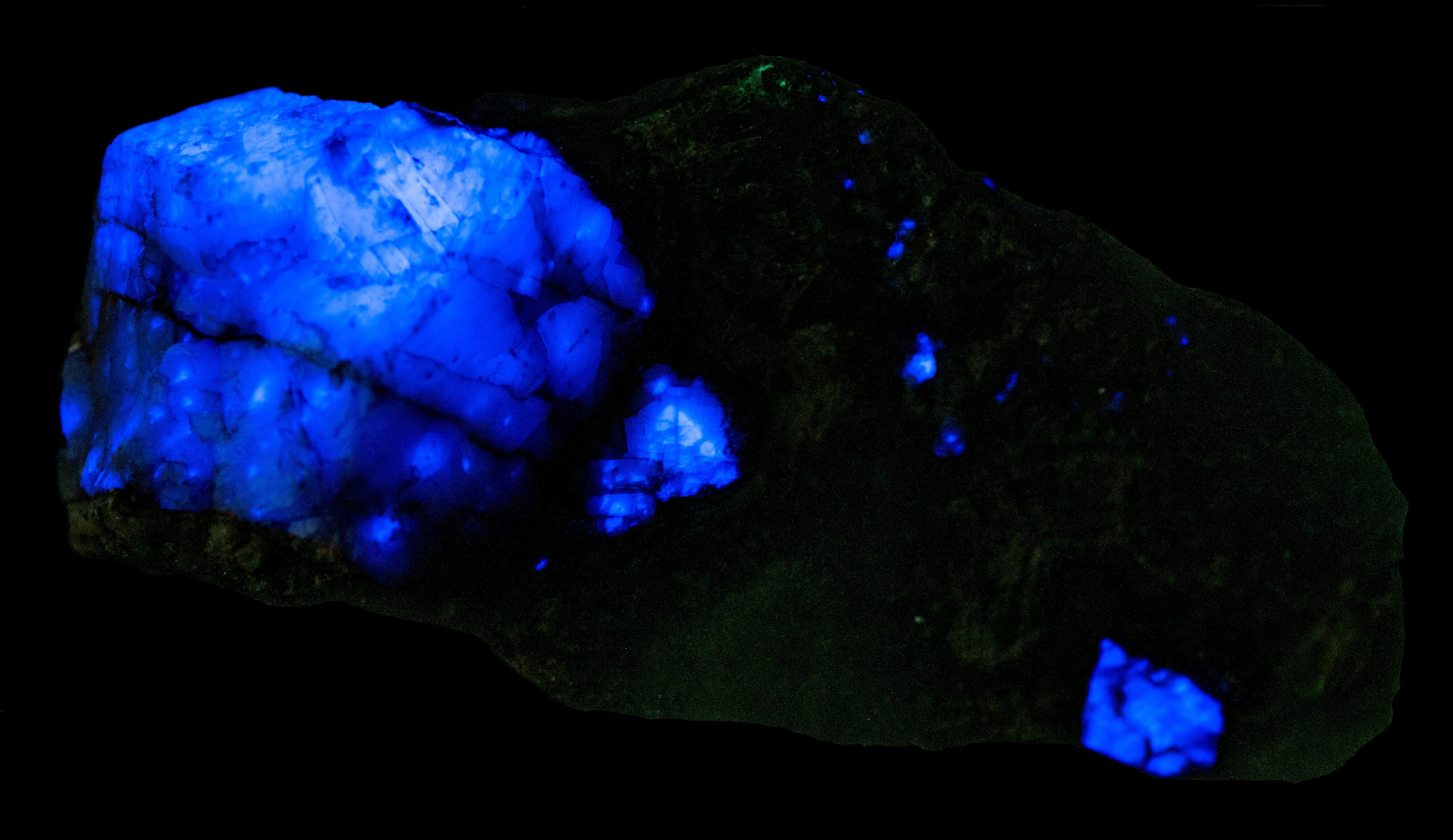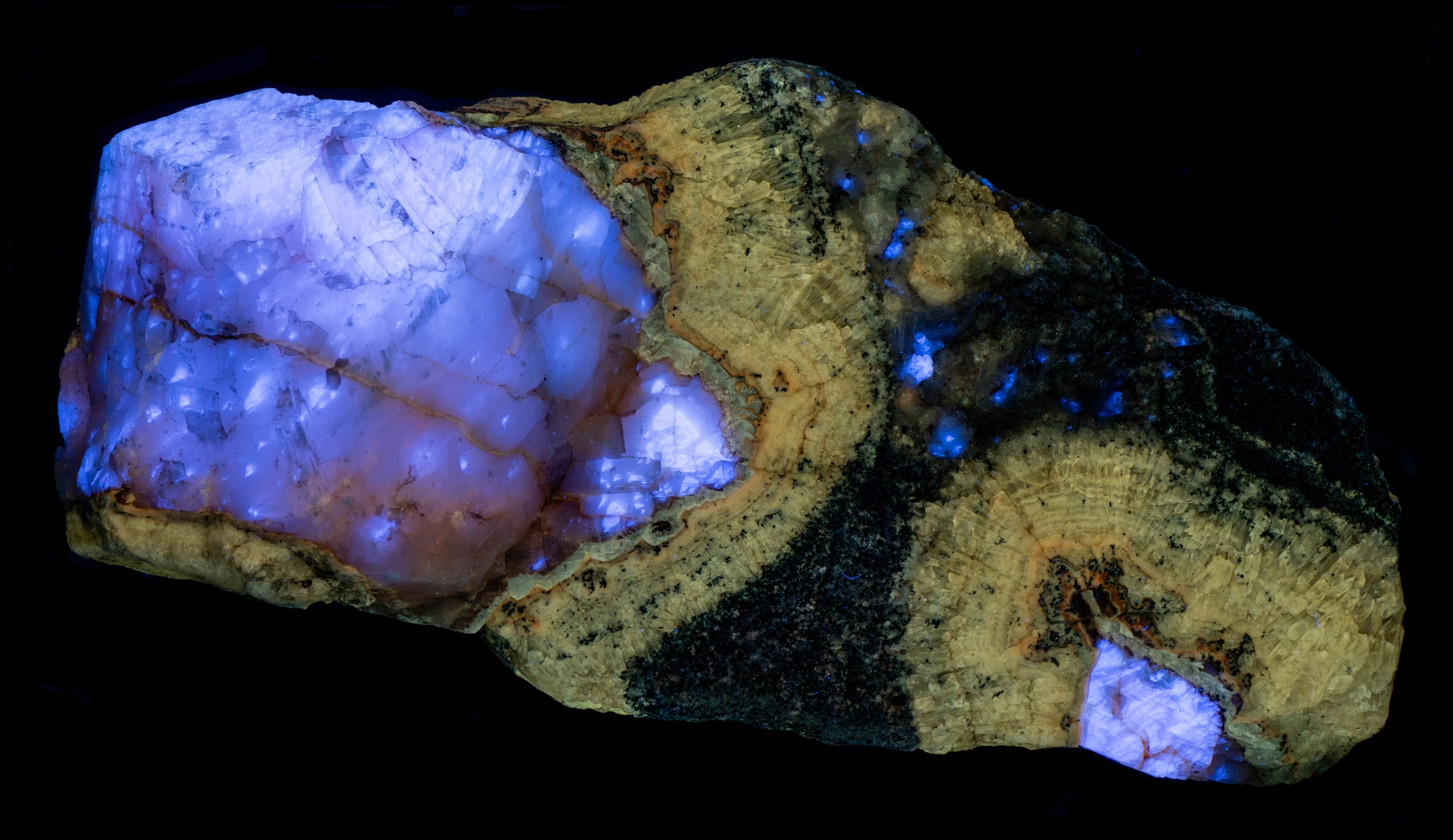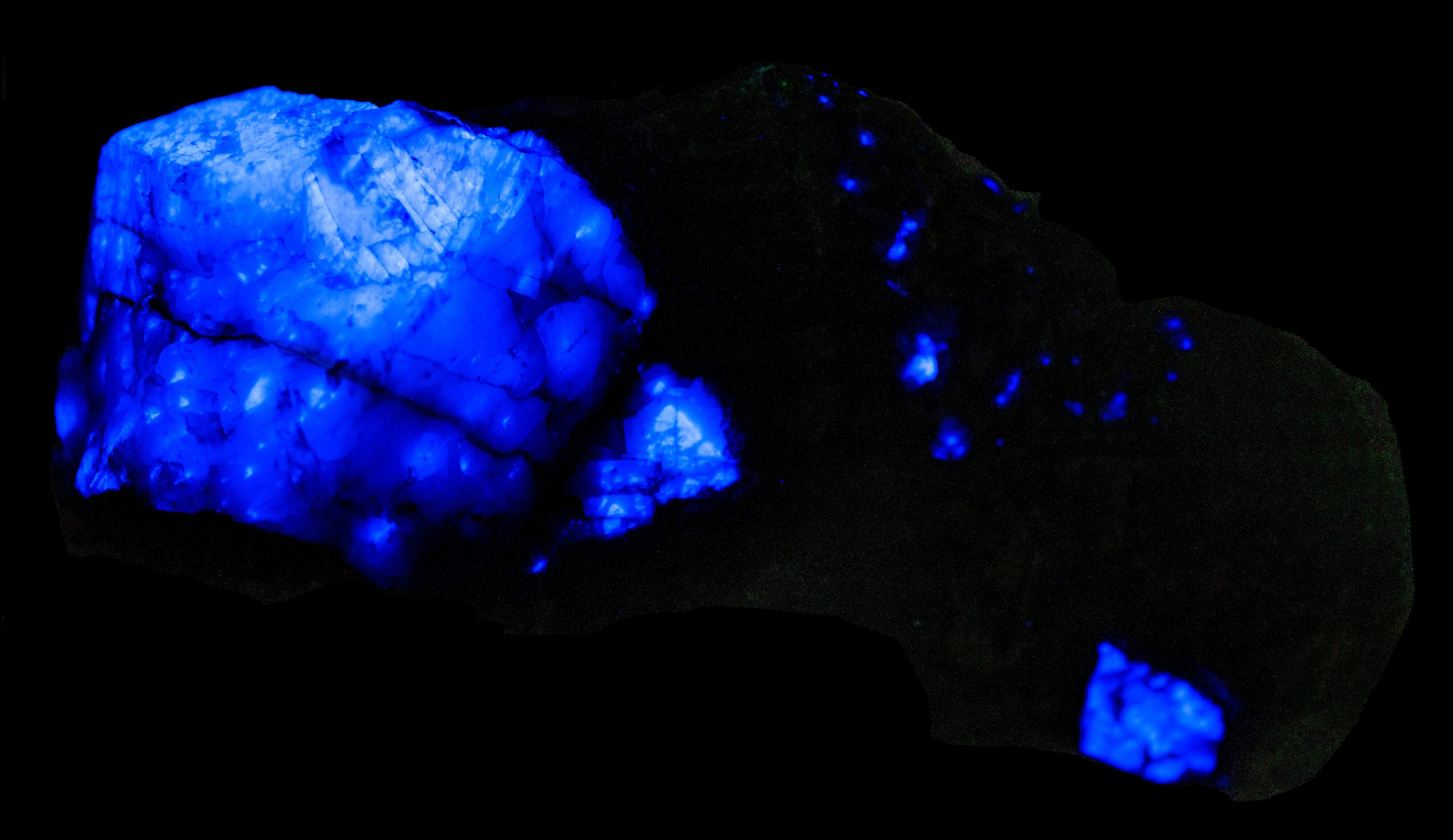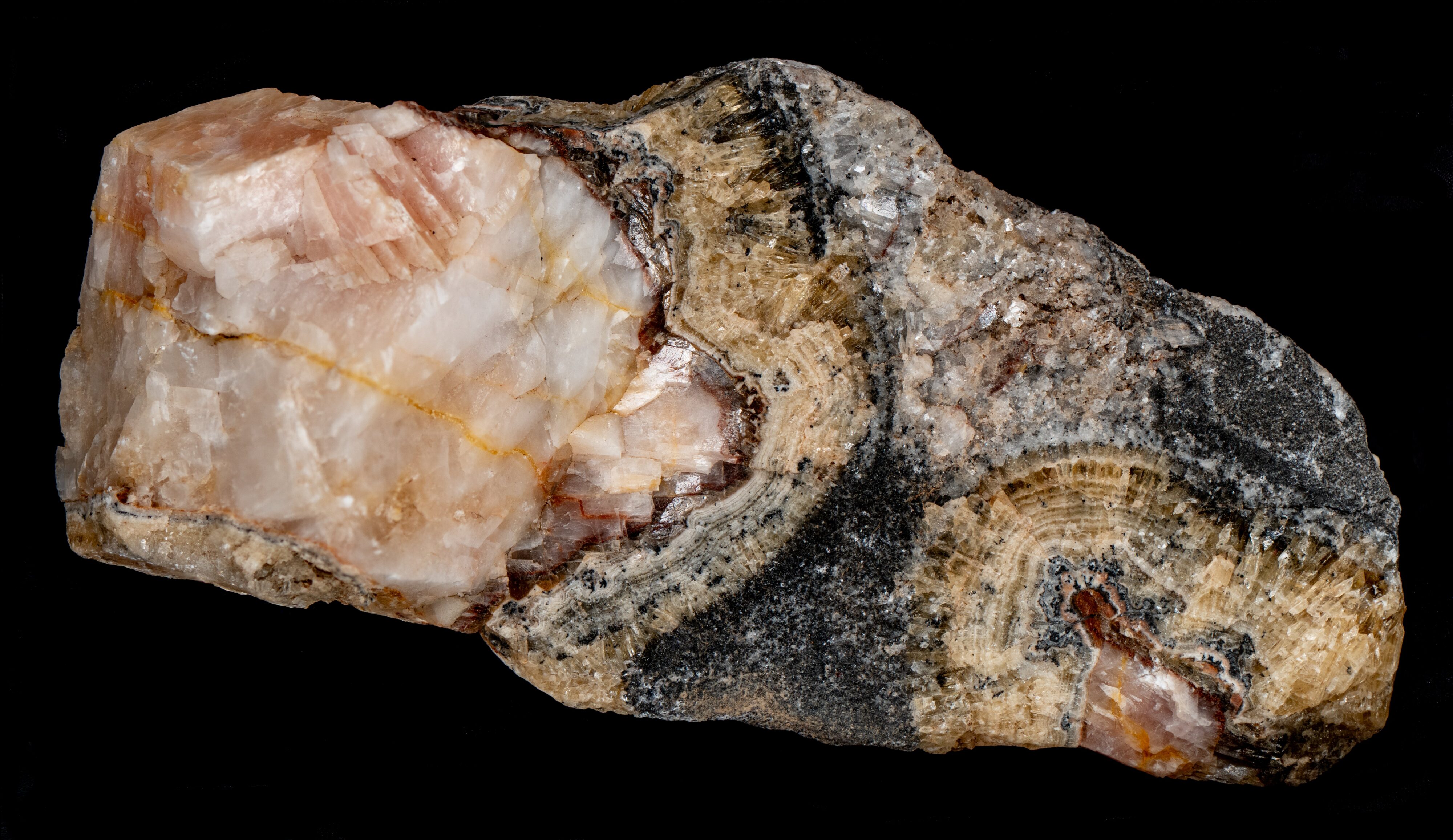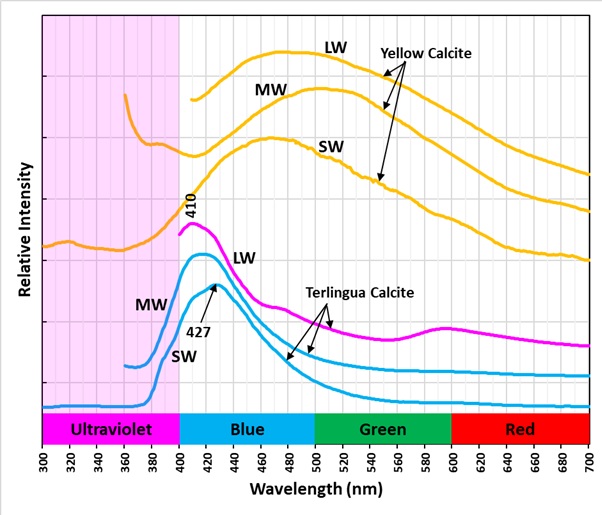Multi-color Calcite from Terlingua, Texas
Contributed by: Michael Crawford
Date: Jul 21st, 2025
Locality: Little 38 Mine, Brewster County, Texas, USA (See on Mindat)
Size: 6.5 x 12.5 cm
Description:
This calcite specimen is from the Little 38 Mine in Terlingua, Brewster County, Texas. The sample contains the characteristic Terlingua-type calcite, which fluoresces pink under longwave UV light, violet under midwave, and bluish white under shortwave UV light. It exhibits blue afterglow following exposure to midwave and shortwave light, while only a weak afterglow is observed after longwave UV exposure. The fluorescence is likely due to luminescence centers produced by radiation damage.
The specimen also contains banded, yellow, fluorescent calcite surrounding the Terlingua-type calcite. The yellow fluorescence of this banded calcite remains consistent across all UV wavelengths. It shows a faint greenish-yellow afterglow with longwave illumination but does not exhibit afterglow after midwave or shortwave exposure. The yellow banded calcite has a honey color in the white light image and the yellow fluorescence suggests that hydrocarbon inclusions may be present. The hydrocarbon inclusions are likely activators of the yellow fluorescence.
The banding of the calcite indicates that it formed inside vugs within the calcite matrix. The banding represents multiple periods of deposition with the final stage being the filling of the vugs with Terlingua-type calcite.
Emission spectra for both types of calcite are shown in the last image. The emission spectra of the yellow calcite exhibit broad peaks under all UV wavelengths, with maximum intensity between 470 nm and 520 nm.
Terlingua-type calcite spectra have a peak at 410 nm in the blue region under longwave as well as a broad peak at 595 nm in the longwave spectrum. The combination of the blue and reddish fluorescence under longwave UV results in the observed pink color. The shortwave spectrum has a single peak with a maximum at 427 nm. There is no red fluorescence, so the calcite appears blue under shortwave UV light.
Summary of luminescence responses:
Calcite (Mindat) (RRUFF)
- Fluorescence under Longwave (365nm LED) UV light: Pink
- Fluorescence under Longwave (365nm LED) UV light: Yellow
- Fluorescence under Midwave (305nm LED) UV light: Violet
- Fluorescence under Midwave (305nm LED) UV light: Yellow
- Fluorescence under Shortwave (255nm LED) UV light: Blue
- Fluorescence under Shortwave (255nm LED) UV light: Yellow
- Afterglow after exposure to Longwave (365nm LED) UV light: Green
- Afterglow after exposure to Midwave (305nm LED) UV light: Blue
- Afterglow after exposure to Shortwave (255nm LED) UV light: Blue

